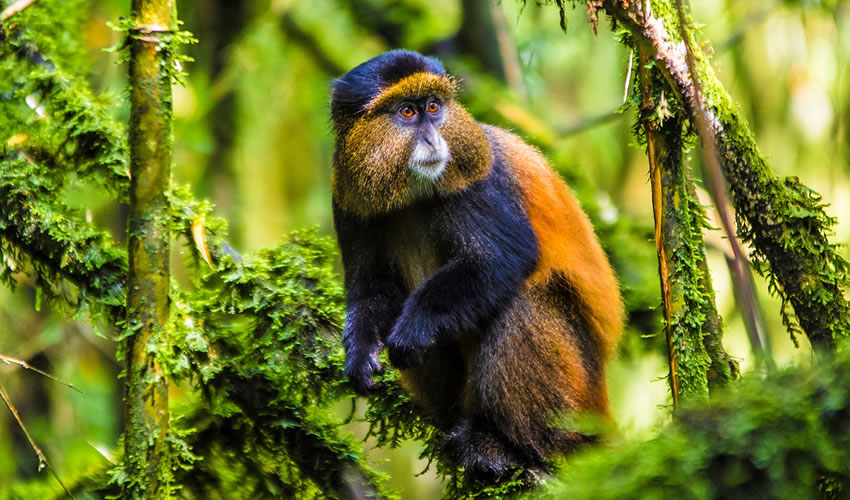
Golden Monkeys
Golden monkeys, scientifically known as the Rhinopithecus roxellana, are a captivating species that inhabit the remote mountainous regions of Asia. With their radiant golden coats and playful demeanor, they have captured the hearts of researchers, conservationists, and nature enthusiasts worldwide. In this essay, we will explore the characteristics, habitat, behavior, and conservation status of these remarkable primates.
Characteristics:
Golden monkeys, also referred to as golden snub-nosed monkeys, possess a unique appearance that sets them apart. Their dense fur ranges in color from bright golden to reddish-brown, providing camouflage against the surrounding forests. They have distinctive blue faces, upturned nostrils, and short, stumpy tails. These medium-sized monkeys typically weigh between 7 and 15 kilograms, and males are larger than females.
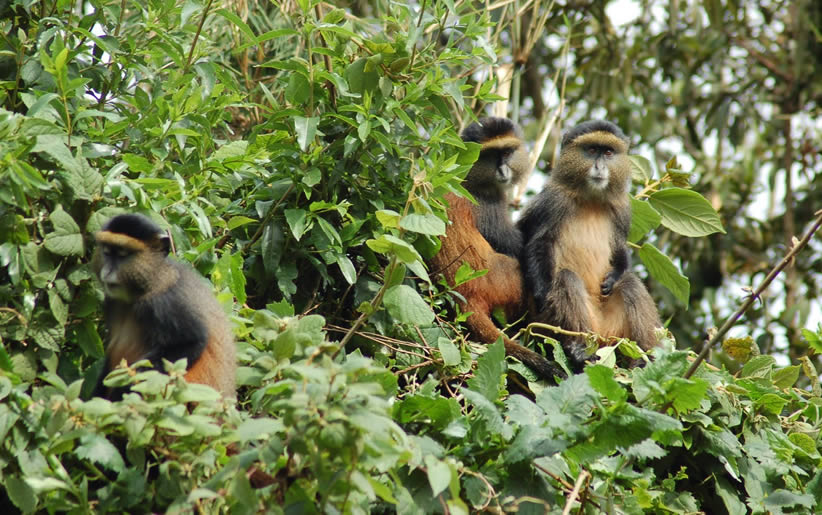
Habitat:
Golden monkeys are primarily found in the mountainous regions of central and southwest China, as well as parts of Myanmar and Vietnam. They are specially adapted to endure the harsh conditions of their habitat, which includes temperate forests at high altitudes. These forests are often shrouded in mist and experience freezing temperatures during winter. The monkeys have evolved to cope with the cold by developing dense fur and exhibiting social behaviors that enhance warmth, such as huddling together in large groups.
Behavior:
The social structure of golden monkeys is intriguing. They live in groups called troops, comprising several individuals led by a dominant male. These troops can consist of 20 to 70 members, and they exhibit a high degree of social cohesion. They communicate through various vocalizations, facial expressions, and body postures. The monkeys are highly agile and spend the majority of their time in the trees, leaping effortlessly from branch to branch.
Feeding Habits:
Golden monkeys are primarily herbivorous. Their diet consists of leaves, fruits, flowers, bark, and seeds. Due to the scarcity of food during winter, they have also been observed consuming lichen and tree barks. Their specialized digestive system allows them to extract the necessary nutrients from these diverse plant sources.
![]()
Conservation Status:
Despite their enchanting allure, golden monkeys face numerous threats to their survival. Habitat loss due to deforestation, as well as fragmentation of their habitat caused by human activities, poses a significant risk to their populations. Additionally, illegal hunting and poaching for their fur and body parts further endanger these remarkable primates. As a result, the International Union for Conservation of Nature (IUCN) has classified golden monkeys as an endangered species. Efforts are underway to protect their habitats, establish conservation programs, and raise awareness about the importance of their preservation.
Ecotourism and Golden Monkey Trekking:
Golden monkey trekking is an emerging ecotourism activity in Uganda, offering visitors a unique chance to witness these delightful creatures in their natural habitat. Trekking expeditions are usually guided, and visitors are required to obtain permits, contributing to conservation efforts and local communities.
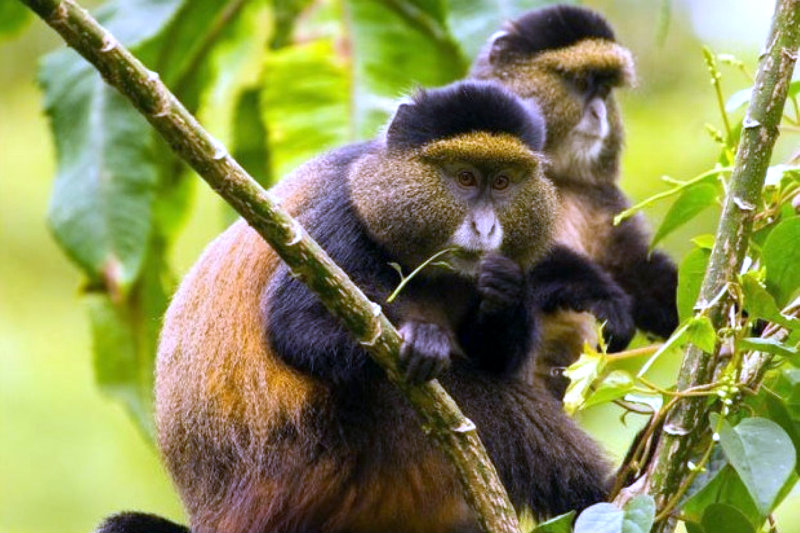
Where can you see Golden Monkeys in Uganda?
Mgahinga Gorilla National Park
Located in southwestern Uganda, Mgahinga Gorilla National Park is another sanctuary for golden monkeys. The park is part of the larger Virunga Mountains, which straddle Uganda, Rwanda, and the Democratic Republic of Congo. The golden monkey population in Mgahinga is relatively small but offers a unique opportunity for wildlife enthusiasts to observe these captivating creatures up close.
Bwindi Impenetrable National Park:
One of the prominent locations to spot golden monkeys in Uganda is the Bwindi Impenetrable National Park. This UNESCO World Heritage Site is primarily famous for its population of mountain gorillas. However, hidden within this ancient rainforest, you can find troops of golden monkeys frolicking in the treetops.
What is the best time to do Golden Monkey tracking?
The golden monkey tracking experience is highly dependent on the location where it takes place. Golden monkeys primarily reside in the Virunga Mountains, which span across Uganda, Rwanda, and the Democratic Republic of the Congo.
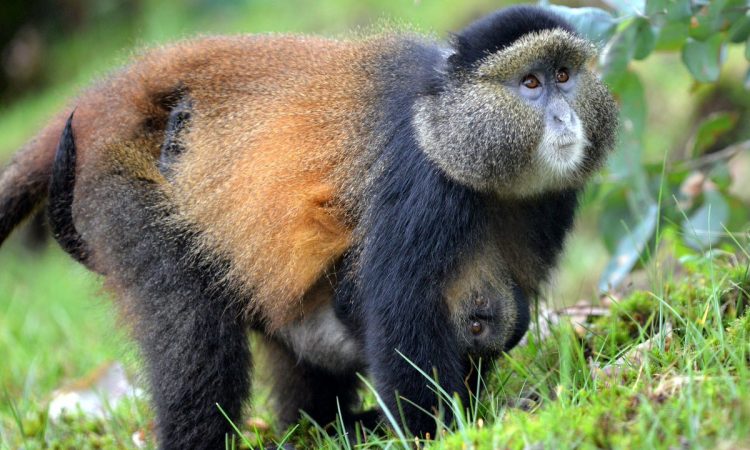
In general, the best time to do golden monkey tracking is during the dry seasons, as it tends to offer better trekking conditions and clearer visibility. In the Virunga Mountains, the dry seasons usually occur from June to September and from December to February. During these periods, the weather is typically more stable, with less rainfall and lower chances of encountering muddy or slippery trails.
It’s important to note that weather patterns can vary, and it’s advisable to check with local authorities, tour operators, or national park services for the most up-to-date information on the best time to do golden monkey tracking in a specific location. They can provide you with details on weather conditions, accessibility, and other factors that may affect your experience.
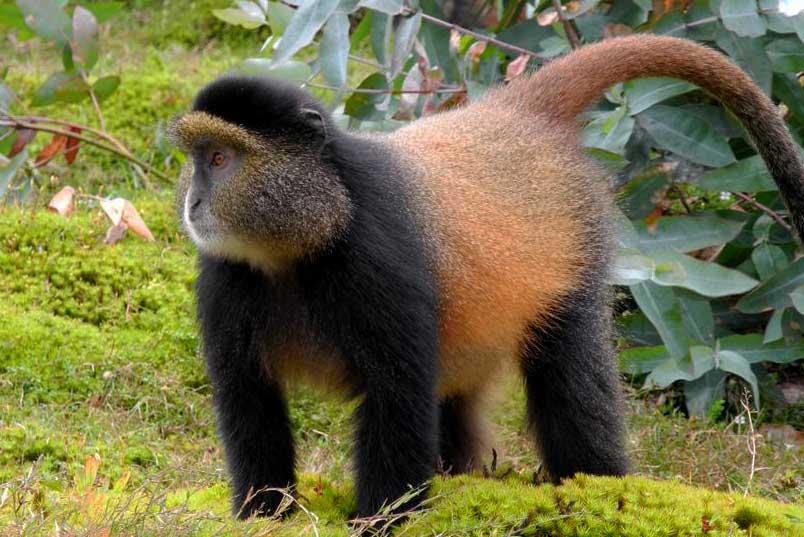
Conclusion:
Golden monkeys, with their captivating appearance and unique behaviors, hold a special place in the natural world. Their stunning golden coats and charismatic personalities have made them subjects of fascination and admiration. However, the challenges they face in the form of habitat loss and human interference require our immediate attention. By actively supporting conservation efforts and promoting responsible environmental practices, we can ensure the long-term survival of these majestic creatures and the preservation of the delicate ecosystems they call home.






